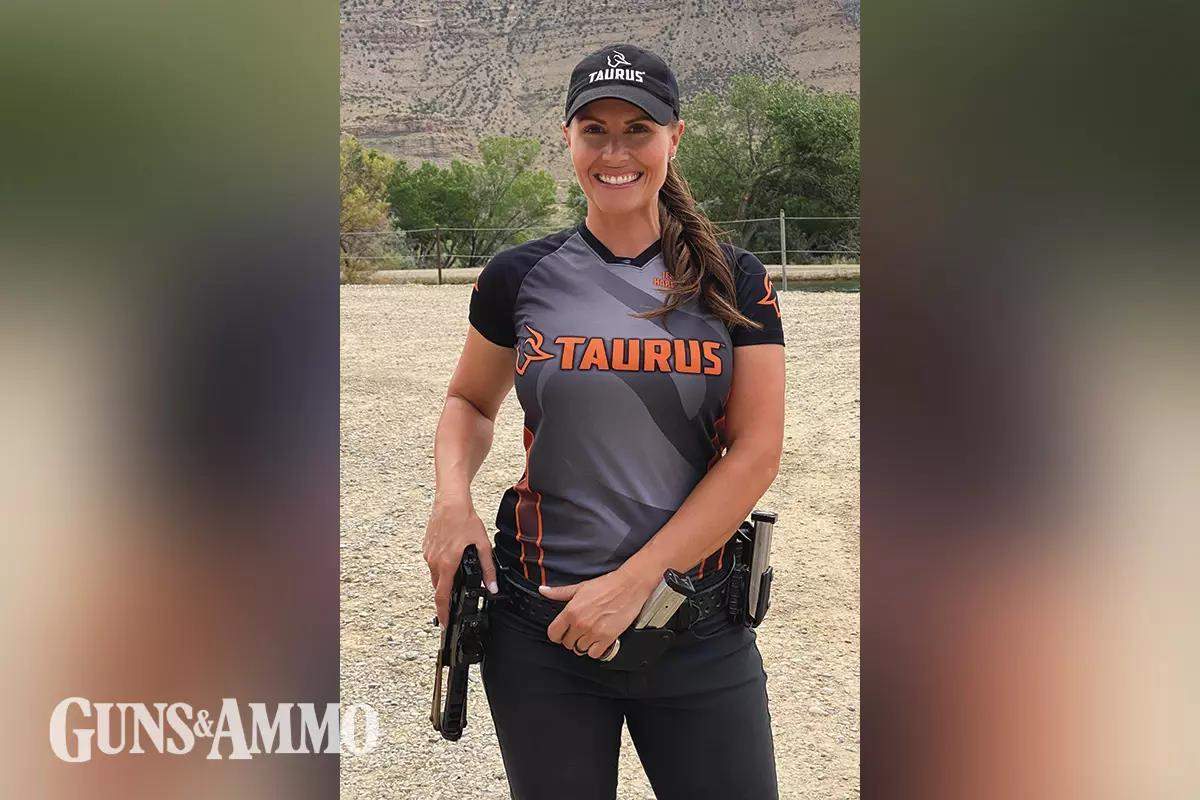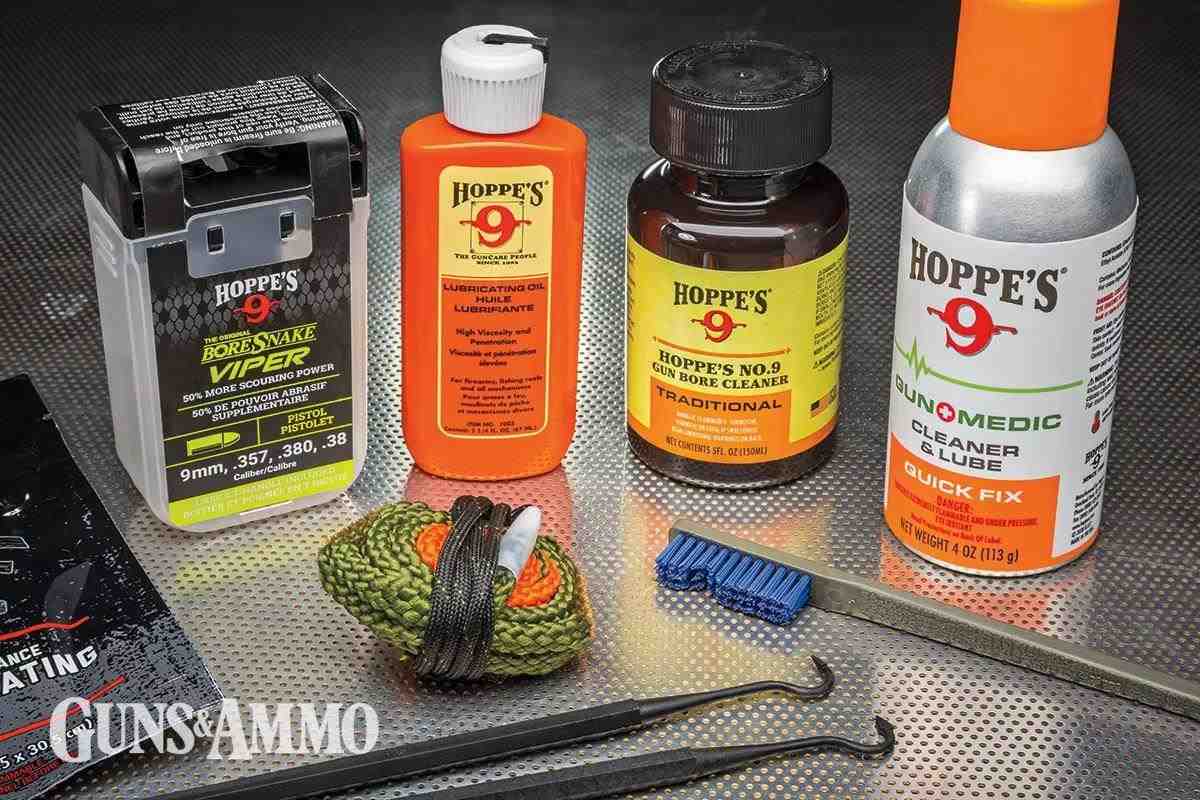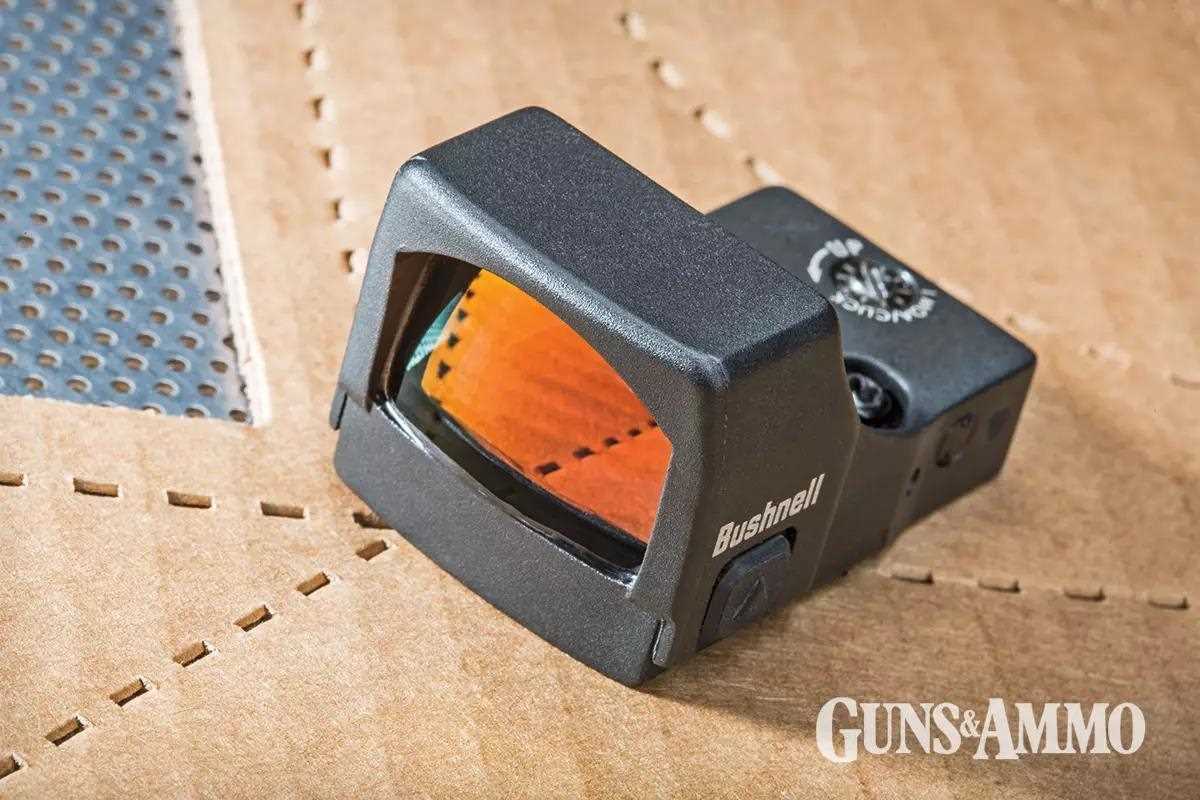We asked the pros for some tips and tricks that aspiring competitors can use to improve their skills and mindset. See what they have to say below.
Jessie Harrison
1. Train with a Purpose
When going to the range for practice, having a training plan is important. When I have an upcoming match, I’ll review the stages to see if there is anything specific I need to be prepared for and add that to my practices. If I know I need to work on something a little extra based on my last performance, I’ll structure a session around that skill. Going to the range without a plan or a goal in mind will just result in rounds downrange without progression. Set daily goals and long-term goals, then build your training around obtaining them.
2. Equipment Maintenance
Advertisement
Maintaining your firearm is extremely important, not just for safety reasons but for overall performance as well. Before a match, I always take apart, inspect, and clean my gun to make sure everything is still in working order. Having a regular cleaning schedule is helpful as well, to slow down the wear and tear of parts. I try to clean mine every 1,000 rounds, but every gun is different. This is just what I’ve found to work best for me. I try to control as many factors as possible when going into competition, and having my gear in the best condition gives me added confidence.
3. Traveling with Firearms
One of the most common questions I get is, “How do I fly with firearms?” As long as you follow TSA guidelines, it’s easier than you would think! Here are a few things to know that will give you an idea of what to expect.
Advertisement
All firearms must be unloaded and stored in a locked, hard-side gun case (I prefer to use TSA combination locks, so if they need to open it, you won’t get called back to security, and you don’t have to worry about losing a key). Your gun case can be checked as a piece of luggage or placed in another suitcase. You must declare your firearm to the airline when you check in, sign a declaration stating it is unloaded, then you’re ready to go! Again, check with TSA for current and updated regulations along with your airline before traveling. If you’re traveling outside of the United States, you’ll need to confirm you have the proper permits and documentation.
4. A Female Mindset

There are more women than ever before in the shooting sports, and it continues to grow. I’m constantly asked about being a female in a male-dominated sport and how I handle it. Since I started shooting, I never thought of myself as “just a female shooter” or that I was competing against “just the ladies.” The great thing about competitive shooting is that being male or female has nothing to do with one’s ability to shoot a firearm or compete. My goal has always been to be the best all-around shooter I can be, without restricting myself to a category. Women in this sport have raised the bar for performance levels and have joined the ranks of overall champions, proving that hard work and determination are most important and will always win!
KC Eusebio
1. Know What Gear to Bring
We often do a gear checklist before leaving the house: gun, holster, ammo, magazines, etc. But there are a few essentials that could be forgotten. Gloves, hand warmers, and rain jackets are vital for cold, rainy weather that we might overlook due to living in a hot and humid environment. As a precaution, I tend to leave those in my range bag at all times. It’s always better to bring more than less when it comes to competing and winning.

2. Zeroing Your Red-Dot Sight
A frequent question I get from newer red-dot shooters is, “What distance do you zero your pistol at?” I’ll typically zero my red dot depending on the average distance of targets at the upcoming major match I plan on competing at. You don’t want to check your zero at 5 yards when the average distance could be 18 yards, as your rounds might be higher than you anticipated. A big mistake is not confirming zero at multiple distances. I tend to check my zero at 7, 15, 25, and 35 yards. I want to know what my round is doing so I can understand how to hold for different target presentations.
3. Plan of Attack
When I look at a course of fire, I try to dissect where I can play to my strengths. If you move quickly, find places where you can utilize movement to your benefit. If you’re accurate, look for areas where you can shoot targets at further distances and cut a position out of your stage. If you’re great at shooting on the move, try to add more targets to engage while your feet are moving. Use your strengths as an advantage!

4. Picking a Division
So, you’ve found practical/speed shooting, and you’re slowly falling in love. What’s next? Time to pick a division. Open, Limited, Carry Optics, Production, Single Stack, Pistol Caliber Carbine, and Revolver are some of the divisions in practical shooting. If you’re a new shooter and don’t want to break the bank, the Production division can be a great division to start in. You can utilize a striker-fired pistol or double-action pistol with very little work needed to start getting your feet wet. You can also upgrade that pistol to the Carry Optics division for more round capacity and a slide-mounted red dot to take you to the next level. The Limited division requires you to shoot .40 caliber with iron sights and brings a great challenge in the shooting sports. If you’re wanting to go all out, you can try the Open division, which is the Formula One of pistol shooting. You can add a compensator, frame-mounted optic, extra round capacity, and magazine well, etc. Whichever division you choose, you are guaranteed to have a great time.

Trent Eichler
1. Know Your Stage Plan
As a new shooter, I sometimes have a hard time coming up with the best stage plan and executing it correctly. One thing I find that helps is using your walk-through time to visualize and mentally solidify your plan while you’re on deck waiting to shoot.
2. Understanding Your Ammunition
Being new to competitive shooting, I didn’t understand the differences between bullet weights and power factors. Coming from a hunting background, I tend to stick with a specific caliber with less factors to worry about. For pistol shooting, I’ve learned that different bullet weights will not only change my point of impact but can also change how the gun recoils and how fast it cycles.

3. Learning from More Advanced Shooters
When learning to shoot, or learning any new skill, watching more advanced competitors will always help elevate your performance. I try and study some of the top shooters and their styles, then incorporate that into my shooting and training as well.
4. Turning Match Performances into Training Lessons
Something that helps me is looking at what I can improve from my match performance. I then take that information to the practice range. When reviewing my competitions, it’s easy to focus on the negatives or what went wrong, but it’s important to reinforce the positive things as well, especially since I’m still learning.
Read the full article here


